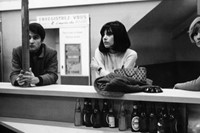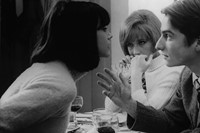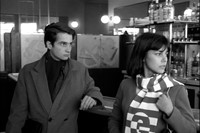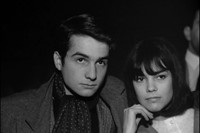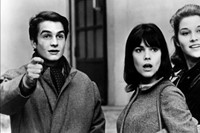We celebrate the empowered sartorial choices of the young chanteuse in Jean-Luc Godard's 1966 masterpiece
In 1966, master of French New Wave cinema Jean-Luc Godard focused his lens once more on the streets of Paris for his experimental and highly compelling free-form film Masculin Féminin. The movie plunges us into the world of “the children of Marx and Coca-Cola” – as Godard himself famously describes in one of the film’s intertitles – exploring the contradictions and preoccupations of a youth divided between activism and consumerism, between politics and pop culture. It is a fascinating time capsule of a distinctly 60s sexual-political climate, which Godard termed “Freudemocracy”; a period when both the Vietnam war and the sexual liberation movement were raging.
The film is a love story between Paul (Jean-Pierre Leaud), a 21-year-old would-be intellectual fresh from a mandatory stint in the forces, and Madeleine (Chantal Goya), an aspiring pop star, working in the photo department of a Parisian magazine. Paul’s political activism (he and his friend Robert spend their free time handing out leaflets and adorning walls with anti-American graffiti) and cultural snobbery is undermined by his ardent desire for the delicately featured chanteuse, who, much to his frustration, remains largely indifferent to him. Madeleine, for her part, is entirely self-absorbed, her face a beautiful but maddeningly blank canvas throughout.
Indeed, when Godard was questioned about his casting of Goya, herself a rising Yé Yé singer whose songs punctuate the film’s soundtrack, the auteur said that her beauty had nothing to do with it. Instead he felt that her “empty” expression exemplified “the Pepsi Generation” he was looking to capture. But Madeleine is not merely a slave to American consumerism. Godard also celebrates the newfound freedom for women in an age of burgeoning enlightenment – where what they say, whether they get pregnant, the dreams they choose to pursue and, importantly, how they dress, is finally in their hands – and the confusing consequences of this upon sexually driven young men.
The Signature Style
Madeleine clearly delights in fashion, opening one of her earliest voiceovers with a description of her “blue coat” and that of her friend Elisabeth, which is “trimmed with white”. When we first meet the beguiling singer, along with Paul, in a cosy cafe, she is wearing a tight, cream, woollen polo neck and a black, above-the-knee skirt, accompanied by nude legs and patent black loafers – as she later tells a Radio Europe journalist, “I like short skirts and flat shoes.” Her pixie features are framed by an immaculate, dark brown bob and blunt fringe, which she attends to frequently throughout the film. She boasts a sophisticated confidence offset against a school-girl coquettishness, which is enhanced by her decision to wear “hardly any make-up”.
Her later outfits continue to tread the line between girl- and womanhood. During her bathroom encounter with Paul – an amusing tête-à-tête where he attempts to call her out for prudishness while she retains the upper hand with her evasive yet self-assured manner – she embodies school-uniform chic, sporting a double-breasted dress, with white Peter Pan collar, in a pale pastel fabric; while later, as she dances alluringly in a club (to Paul’s disdain), she wears a close-fitting white cardigan and gold heart pendant along with a sleek miniskirt. In the film’s bedroom scene, her pyjamas are childish – a white twinset with oversized buttons – again showing her to be on the brink of sexual awakening.
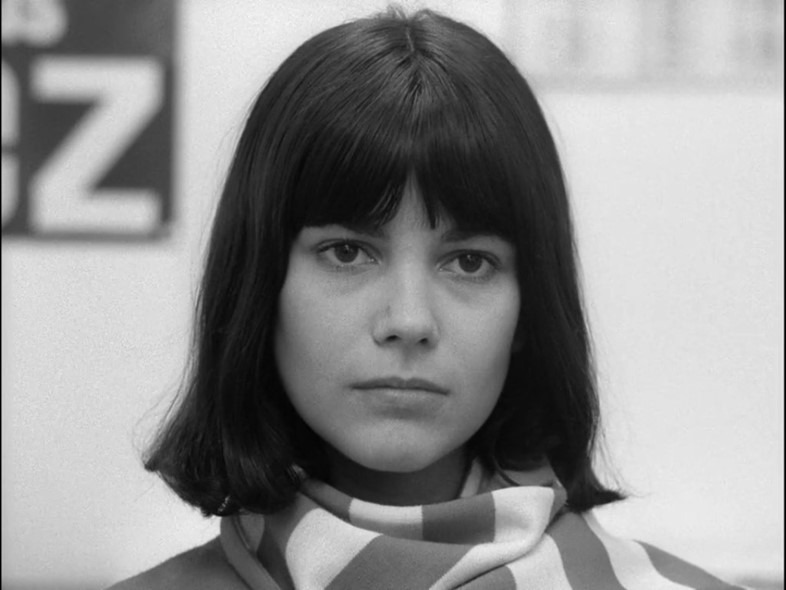
Interestingly, one of Madeleine’s most defining ensembles is a peacoat, whose pocket boasts a large embroidered “C”, and matching striped scarf (in bright red and white, although this is indistinguishable in the film’s monochrome tones) emblazoned repeatedly with the letter “G”. This, as noted by Colleen Hill, curator of the Fashion Institute of Technology’s current exhibition Paris Refashioned, 1957-68, was clearly Goya’s own outfit; the personalised style, which allowed shoppers to stamp clothes with their own initials, was designed by Daniel Hechter and retailed at La Knack boutique for 360 francs. The fact that Madeleine’s wardrobe comprises Goya’s own clothes is further evidence of how important it was to Godard that his actors were true representations of their characters, lending a documentary tone to the film. The director also conducted interviews with various cast members himself, allowing them to improvise some of their responses about sex, socialism and consumerism, before splicing the footage to make it appear they are conversing with one another, to remarkably innovative and candid effect.
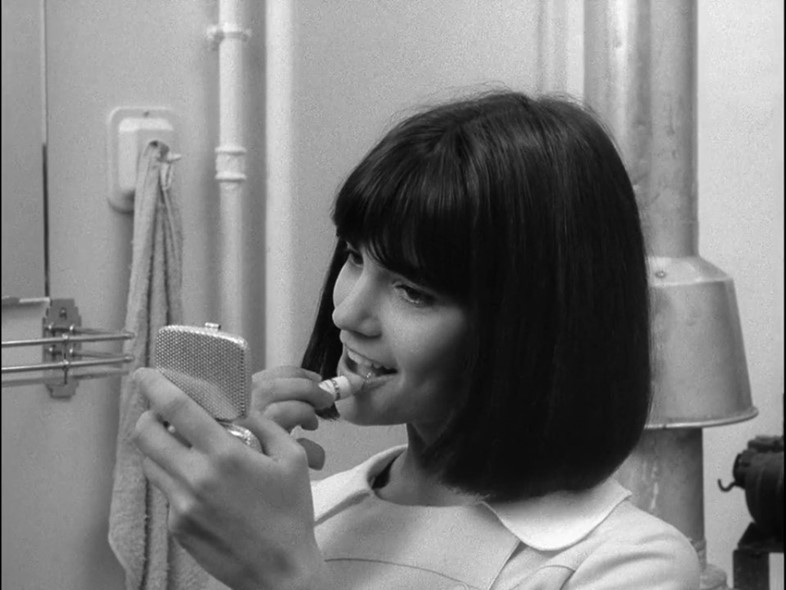
The Modern Manifestation
Many of Madeleine’s outfits can easily be reinterpreted today; her covetable knitted polo neck and tailored peacoat pairings have a distinctly contemporary Prada feel to them, while her black patent flats could just as easily be found on the Fendi runway as they could on the streets of 1960s Paris. Her pert bob remains picture perfect and her penchant for minimal accessories – a black, gold-trimmed clutch, a simple gold and black watch – provide a lesson in pared-back Parisian discernment. But the overarching message to be gleaned from our ambivalent but ambitious heroine is to dress how you please; to embrace your youthfulness or step up your cultivated elegance as it suits you and to find empowerment in your choices.

